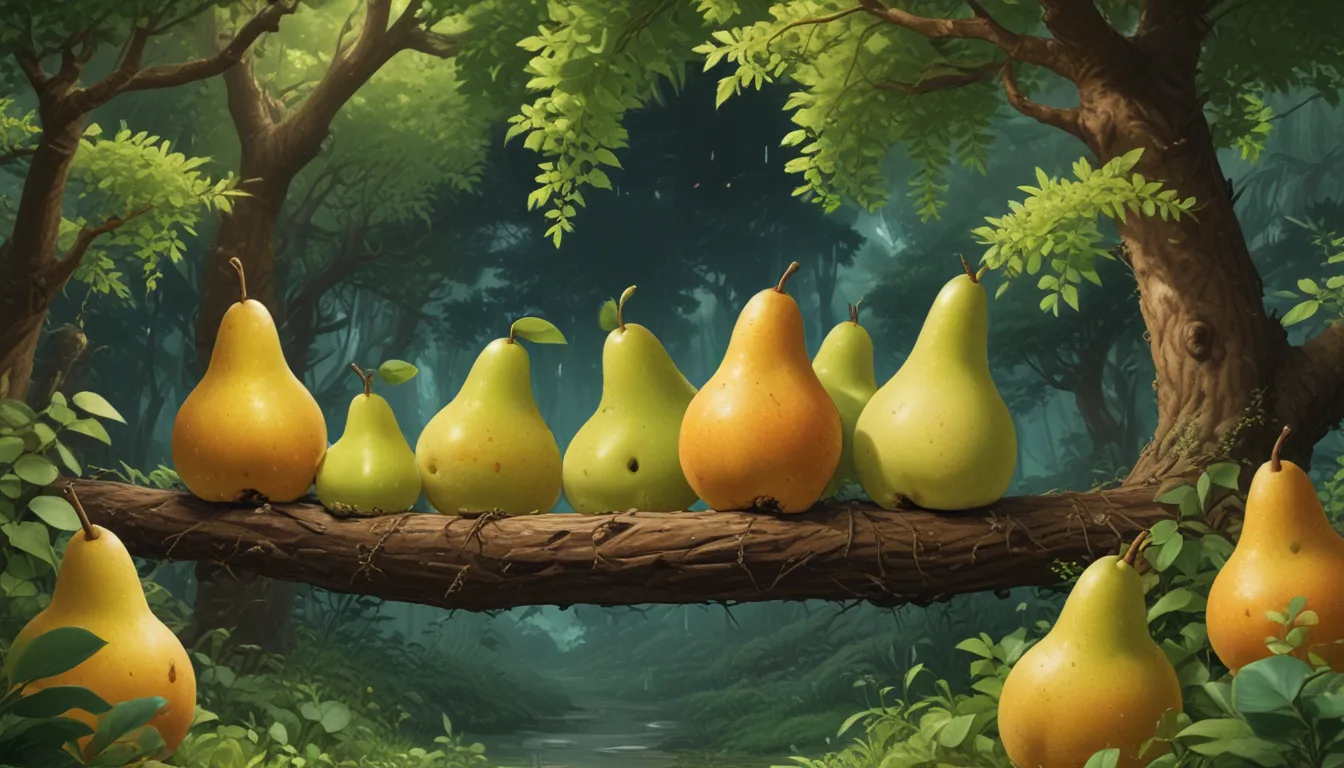The Ultimate Guide to Growing and Caring for ‘Bosc’ Pears

Pyrus Communis ‘Bosc’
If you close your eyes and think of a classic still life painting featuring pears and grapes, chances are there’s a ‘Bosc’ pear in there. The elongated neck, long stem, rounded base, and cinnamon-brown skin of the ‘Bosc’ pear make it a work of art that appeals not just to the eyes but also to the taste buds.
This article aims to provide you with a comprehensive guide on how to grow and care for ‘Bosc’ pears, from their history to cultivation, propagation, harvesting, and preservation. Let’s dive right in!
The Regal History of ‘Bosc’ Pears
The ‘Bosc’ pear, a cultivar of the European or common pear, Pyrus communis, has a rich and storied past. While the exact origins of the ‘Bosc’ pear are shrouded in mystery, with some attributing its creation to Belgium and others to France, it’s undebatable that this variety has been in cultivation since the early 1800s.
Named after Louis Augustin Guillaume Bosc, the director of the National Museum of Natural History in Paris from 1825 to 1828, this cultivar is also known as ‘Buerre Bosc’ or ‘Calabasse Bosc.’
In North America, ‘Bosc’ pears made their way to commercial orchards in the early 19th century, particularly in the Eastern U.S. before becoming a major player in the commercial orchards of the Pacific Northwest.
Cultivation and Propagation of ‘Bosc’ Pears
‘Bosc’ pears are typically propagated through grafting, ensuring that the new tree retains the desirable characteristics of the parent tree. While it is possible to start ‘Bosc’ pears from seed, the resulting seedling will not be true to the parent.
Propagation Methods:
- Cuttings: Take six- to eight-inch stem cuttings in spring
- Grafted Rootstock: Graft a ‘Bosc’ scion onto a rootstock base
For home growers, purchasing a sapling from a nursery or garden center is often the easiest way to start growing ‘Bosc’ pears.
Planting and Transplanting:
- Best planted in the fall
- Soil should have a pH between 6.0 and 7.0
- Dig holes twice the width and same depth as the container
How to Grow ‘Bosc’ Pears
‘Bosc’ pears are adaptable to various soil types, with loose, rich, loamy soil being ideal. While ‘Bosc’ trees are self-pollinating, planting a companion pear tree nearby such as ‘Bartlett,’ ‘Comice,’ ‘D’Anjou,’ or ‘Seckel’ can improve fruit production.
Growing Tips:
- Grow in full sun
- Plant in loose, rich soil
- Ensure suitable soil moisture
Fertilization is generally unnecessary unless a soil test reveals specific nutrient deficiencies. If fertilization is required, apply an all-purpose fruit tree fertilizer just before the buds swell in spring and again after flowering.
Pruning and Maintenance Tips
Regular pruning is essential for optimal fruiting in ‘Bosc’ pear trees. Pruning in early spring ensures proper air circulation, sunlight penetration, and reduces the risk of pest infestations.
Key Pruning Tips:
- Prune in early spring
- Thin young fruits for larger yields
Where to Buy ‘Bosc’ Pear Trees
‘Bosc’ pear trees are widely available, with nurseries such as Nature Hills and Fast Growing Trees offering different size options. Remember to plant a pollinator such as ‘Bartlett’ nearby for improved fruit production.
Managing Pests and Disease
While ‘Bosc’ pears are relatively resistant to pests, common threats include aphids, codling moths, and scale. Regular monitoring and appropriate preventive measures such as horticultural oil applications can help control pest populations.
Common Diseases and Prevention:
- Fireblight: Prune affected branches and avoid over-fertilization with nitrogen
Harvesting and Preservation of ‘Bosc’ Pears
‘Bosc’ pears are ready for harvest in late summer to early fall. To determine ripeness, gently press near the stem for slight give. Various preservation methods such as drying, canning, or freezing can help extend the shelf life of ‘Bosc’ pears.
Recipes and Cooking Ideas
‘Bosc’ pears are versatile in the kitchen, making them perfect for baking, broiling, poaching, or pairing with cheese. Consider trying them in salads, chutneys, or paired with hearty meats for a burst of flavor.
Quick Reference Growing Guide:
Conclusion:
‘Bosc’ pears are truly the royalty of pears, offering a delightful combination of flavor, texture, and appearance. By following the tips and guidelines provided in this comprehensive guide, you can successfully grow and care for ‘Bosc’ pear trees in your own garden. Enjoy the bountiful harvest and culinary possibilities that these regal fruits have to offer!





